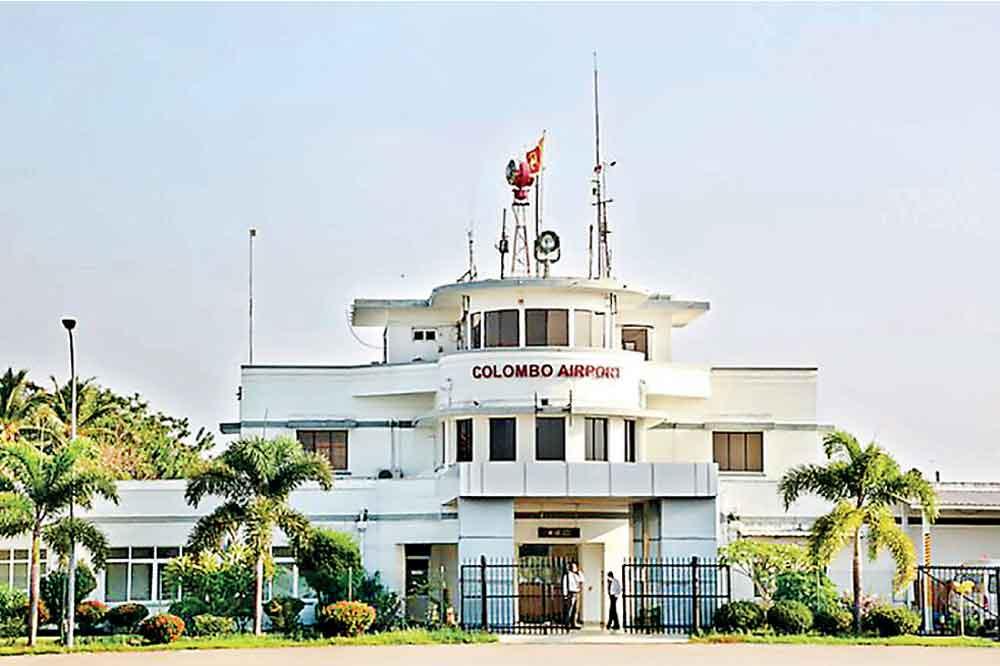Reply To:
Name - Reply Comment

The Ratmalana Airport, where the wall was built during the 2005/2006 period to protect from LTTE threats.
Let us revisit the whys and wherefores behind constructing the wall at Ratmalana Airfield. To the best of my recollection, this wall was built in 2005/2006 to protect the aircraft and runway from potential LTTE attacks. During the conflict, Ratmalana airfield served as the main transport hub for military aircraft, housing planes that delivered troops, warfighting equipment and rations to air-dependent military units in the North and East. With time, this fact has been conveniently forgotten, a trait not uncommon amongst Sri Lankans.
During the Civil War
At the peak of operations, the Ratmalana Airfield was a prime target for the LTTE, whose survival was directly threatened by its functionality. The LTTE’s preference for sabotage via small infiltration teams was a well-known strategy, though this risk may not be fully appreciated today.
The question at the time was whether to physically protect the national aircraft fleet and runway or leave them exposed to potential attacks, considering the highlighted critical aspect of flight safety. Given that Galle Road was (and still is) a vital supply route to the South, closing it to traffic and the public for airfield security was impractical and would have caused public inconvenience. Thus, constructing a wall to deter infiltrators emerged as the most viable alternative priority to protect the assets and proved to be successful. I am most certain there would have been a public outcry if the airfield was attacked by the LTTE at that time that has been conveniently forgotten in 2025. Then the blame might have been directed elsewhere.
The Galle Road is approximately 4 feet higher than the 04 end of the runway.This means that the runway even without the wall is at a lower level, and this difference creates a natural obstacle for the landing aircraft to overshoot. In this context too it compromises the safety and creates a safety hazard.
The ICAO
Whether this wall was built to International Civil Aviation Organisation (ICAO) standards or as a concrete structure remains unclear. However, considering the circumstances, it seems likely the decision was made after evaluating all options in what was truly a “catch-22” situation—a dilemma where every solution presented inherent drawbacks.
Regarding the assertion that “the regulatory authorities are either ignorant of or choose to ignore ICAO standards recommending frangible barriers in such instances”, it is crucial to understand the context of the decision made during the peak of the greater conflict that remained with the LTTE that had national implications. For example, a solid, reinforced concrete wall might have been deemed necessary under the specific security threats perception at the time.
The recent incident at Muan International Airport in South Korea highlights the complexity of such decisions. On December 29, 2024, a Jeju Air Boeing 737- 800 collided with some concrete berms at the runway’s end where the antennas were mounted, tragically claiming 179 lives. However, this disaster was not solely due to the presence of this barrier. Investigations have raised questions about bird strikes, engine failures, the absence of landing gear deployment, and the plane’s unusually fast and late approach and touch-down point. When you compare and contrast the scenario in Sri Lanka at that time, it was quite different from Korea.
As reported, experts noted that modern aircraft designs account for bird strike scenarios, and multiple redundancies are built into systems to handle such failures. In this case, the absence of landing gear, improper flap settings and miscommunications with air traffic control likely contributed to the crash.
Authorities have since scrutinised whether the concrete berms housing antennas near the runway should have been constructed using lighter, frangible materials to minimise impact severity. This underscores the importance of balancing operational, security, and safety considerations.
Concerns raised by the industry
In light of these events, the concerns raised in 2025 by the Aircraft Owners’ and Operators’ Association (AOAOA) about the “deadly concrete wall at the Galle Road end of Colombo International Airport Ratmalana (CIAR)” merit careful consideration. A comprehensive safety audit is essential to ensure that Ratmalana meets ICAO requirements for international airfields. AIP SRI LANKA VCCC AD 2-1 (dated 08th August 2024) gives a list of available facilities.
As outlined in ICAO requirements, rather than assigning blame, the focus should be on identifying and addressing shortfalls to enhance safety while preserving operational integrity. It merits to note that Ratmalana Aerodrome was ceremonially opened as the Colombo International Airport on 28th February 1938 by Governor Sir Andrew Caldecott and launched the Air Mail service between Colombo and Mumbai using the Mail Room at Ratmalana Aerodrome.
Revisiting the airfield’s design and facilities with safety audit and rational thinking considerations in mind would serve the best interests of all stakeholders.
Patriotic citizen